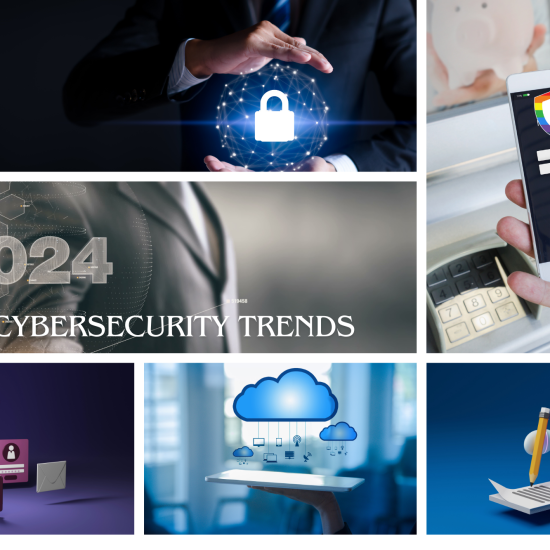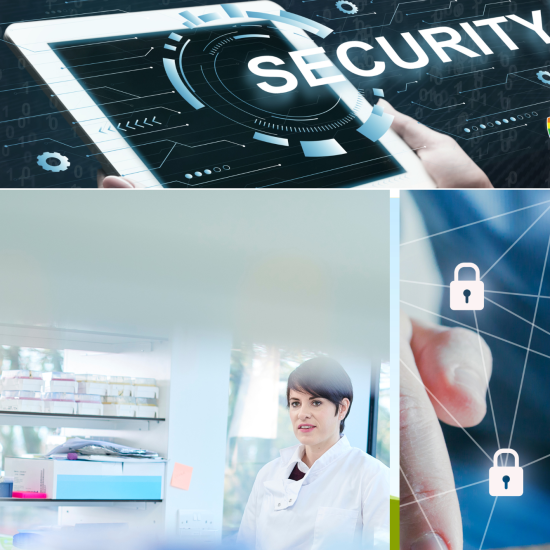Safeguarding the Backbone: Cybersecurity Challenges and Strategies for Critical Infrastructure
In an interconnected digital age, critical infrastructure plays a pivotal role in supporting the functioning of societies and economies. Sectors such as energy, transportation, and healthcare are the backbone of modern life, but their increasing reliance on digital technologies also makes them vulnerable to cyber threats. This article delves into the cybersecurity challenges faced by critical infrastructure sectors and explores strategies to secure these vital systems.
According to a recent report by Waterfall Security, industrial operations experienced a 140% increase in cyberattacks in 2022, resulting in more than 150 incidents. The report issues a foreboding warning, stating that “at this growth rate, we anticipate 15,000 industrial sites will be shut down by cyberattacks in less than five years, by 2027.” The majority of these attacks were carried out through ransomware, which encrypted important computer systems and data across IT networks, as well as impacting operational technology (OT). However, most ransomware attacks only affected the IT network, not the OT network.
The FBI Internet Crime Complaint Center’s latest annual report disclosed that over one-third of ransomware attacks reported to the agency in 2022 affected critical infrastructure organizations. Out of the 2,385 ransomware attacks recorded, 870 targeted critical infrastructure organizations. The healthcare and public health sector was the most impacted, as it accounted for 210 attacks in 2022. Ransomware attacks collectively caused adjusted losses of over $34 million last year.
In this article, you will read about:
What is critical infrastructure?
Cybersecurity Challenges in Critical Infrastructure
Exploring some of the biggest Critical Infrastructure attacks
Strategies for Securing Critical Infrastructure
How can Rainbow Secure help?
What is critical infrastructure?
The Cybersecurity and Infrastructure Security Agency (CISA) divides the types of infrastructure considered critical into 16 sectors, each with its unique vulnerabilities and security needs:
- Communications Sector
- Chemical Sector
- Commercial Facilities Sector
- Critical Manufacturing Sector
- Dams Sector
- Defense Industrial Base Sector
- Emergency Services Sector
- Energy Sector
- Financial Services Sector
- Food and Agriculture Sector
- Government Facilities Sector
- Healthcare and Public Health Sector
- Information Technology Sector
- Nuclear Reactors, Materials, and Waste Sector
- Transportation Systems Sector
- Water and Wastewater Systems Sector
The Stakes Are High: Cybersecurity Challenges in Critical Infrastructure
Critical infrastructure attacks pose a significant threat to society, and the risks are continually evolving. Here are some of the top challenges that organizations face in protecting their infrastructure:
Sophistication of Threat Actors
Gone are the days when cyber threats were confined to lone hackers or script kiddies. Today, state-sponsored hackers, criminal organizations, and hacktivist groups deploy advanced techniques and tools to infiltrate critical infrastructure. Critical infrastructure sectors are prime targets for cyber adversaries seeking to exploit vulnerabilities for financial gain, political motives, or even terrorism. Threat actors are becoming increasingly sophisticated, employing advanced tactics to breach and disrupt vital services. Such actors have financial and strategic motives, making them formidable adversaries.
Advanced Persistent Threats (APTs)
APTs are long-term and stealthy attacks that aim to infiltrate and maintain control over critical infrastructure systems. These attackers are patient and often spend months or even years inside target networks. They can cause significant damage by exfiltrating sensitive data, tampering with operational technology, or disrupting critical services.
Ransomware and Extortion
Ransomware attacks have become increasingly prevalent in the critical infrastructure sector. Attackers encrypt critical data or systems and demand hefty ransoms for their release. The consequences of not paying can be dire, as demonstrated by incidents where hospitals and utilities faced service disruptions due to ransomware attacks.
Supply Chain Vulnerabilities
The global nature of supply chains exposes critical infrastructure to risks. Attackers may compromise suppliers or manipulate the supply chain, introducing malicious components into trusted systems. These attacks can be challenging to detect and mitigate, leading to widespread compromise.
IoT and Legacy Systems
Many critical infrastructure systems rely on legacy technology and a multitude of Internet of Things (IoT) devices. These devices often lack robust security features, creating attractive targets for attackers. Vulnerabilities in these systems can be exploited to gain access to critical networks or launch distributed denial-of-service (DDoS) attacks.
Interconnectedness
The interconnected nature of critical infrastructure introduces a domino effect, where a compromise in one sector can have cascading effects on others. This interdependence amplifies the potential impact of a cyberattack.
Human Factor
Insider threats, unintentional errors, and the human factor in general pose significant challenges. Training and awareness are crucial to mitigate the risk of human-related security incidents.
Regulatory Compliance
Meeting regulatory compliance standards is a complex task, especially as these standards evolve to address emerging cyber threats. Navigating the regulatory landscape while maintaining operational efficiency is a constant challenge for critical infrastructure operators.
Exploring some of the biggest Critical Infrastructure attacks
Some of the biggest critical infrastructure attacks include the ransomware cyberattack on Colonial Pipeline and JBS meat company. Both attacks disrupted the supply chain of products in affected countries. Some of the recent attacks were:
Ransomware Attacks: In recent years, ransomware attacks on critical infrastructure have surged. Threat actors target organizations with the intent to disrupt operations, demand hefty ransoms, or even threaten public safety. The Colonial Pipeline incident in 2021 highlighted the vulnerability of energy infrastructure to ransomware attacks. JBS Foods, the world’s largest meat supplier and a recent ransomware victim, revealed on June 9, 2021 that it paid $11 million to hackers. The chief executive of the company’s United States division, Andre Nogueira, said it was a deal to prevent future attacks.
Supply Chain Attacks: Adversaries are increasingly exploiting the supply chain to infiltrate critical infrastructure. By compromising third-party vendors or contractors, threat actors can gain access to sensitive systems and data. The SolarWinds supply chain attack demonstrated the potential scope of this threat.
Nation-State Threats: Nation-state actors are actively targeting critical infrastructure for strategic and geopolitical reasons. These attacks often involve sophisticated techniques aimed at espionage, disruption, or coercion.
IoT Vulnerabilities: The proliferation of Internet of Things (IoT) devices in critical infrastructure introduces new attack vectors. Vulnerabilities in connected devices can be exploited to gain unauthorized access, manipulate data, or disrupt operations.
Let’s explore some major cyber-attacks on critical infrastructure.
- A more concerning cyberattack was on a water treatment plant in Florida in 2021. A cybercriminal had hacked the controls of the facility and adjusted the levels of sodium hydroxide in the water, which could end up poisoning thousands of users. An employee noticed the intrusion and was able to stop the attack.
- A massive cyberattack hit Bermuda’s Department of Planning and other government services. The country’s hospitals, transportation, and education centers remained functional, but other services were down for several weeks. Bermuda announced that it is investigating the attack and declined to state if any sensitive data was compromised.
- Alleged China-backed hackers probed Moderna, a company at the forefront of Covid-19 vaccine development. They searched for site vulnerabilities and singled out users with expanded security authorization within the network in their hacking attempts. The hackers’ primary modus operandi was exploiting software vulnerabilities within a well- known web development software. In this case, however, the hackers were unable to steal classified data and research.
- A natural gas facility in the US was targeted with ransomware which compromised communications and control resources. The cybercriminal first used a Spear Phishing Link to gain access to the IT network before employing the ransomware within the OT network. The compromised areas included Human Machine Interfaces (HMIs) and data storage. Fortunately, the plant never “lost control” of operations, but they were forced to shut down for two days until replacement equipment could be obtained and re-programmed. A lack of segmentation between the IT and OT networks was the facility’s primary weak point.
- San Francisco’s daily commuters to work were given an irksome surprise one morning in 2016. Hackers used ransomware called Mamba to compromise the city’s Municipal Railway (MUNI) light-rail, breaching the system to access and encrypt over 2000 office systems. The attack forced the company to shut down the ticketing systems for four days, leaving customers typed messages “Out of Order” and “Free Rides.” No customer or transaction data was compromised in the attack, and backups allowed the transit authority to recover function on most of the systems soon after the attack was discovered.
- Several U.S. federal government agencies, including Department of Energy entities, were breached in a global cyberattack by Russian-linked hackers. Cybercriminals targeted a vulnerability in software that is widely used by the agencies, according to a US cybersecurity agent.
- An Illinois hospital became the first health care facility to publicly list a ransomware attack as a primary reason for closing. The attack, which occurred in 2021, permanently crippled the facility’s finances.
Strategies for Securing Critical Infrastructure
The safety and security of critical infrastructure is a top priority for organizations in preventing cyber threats and physical attacks. One crucial step in ensuring protection is conducting a comprehensive risk assessment to identify vulnerabilities, threats, and potential consequences. This allows organizations to prioritize security measures and prepare for worst-case scenarios.
When it comes to cybersecurity, access controls are critical. Network segmentation is an effective tool that separates critical infrastructure into different segments, preventing potential breaches and hindering the lateral movement of attackers. Firewalls and intrusion detection/prevention systems (IDS/IPS) are additional measures that organizations should consider to monitor and filter network traffic, detect anomalies, and prevent unauthorized access.
Keeping all software and firmware up to date is essential in addressing known vulnerabilities and exploits. Robust encryption methods should be utilized to protect sensitive data at rest and in transit. Strong security monitoring systems that actively identify and respond to security incidents in real-time should be implemented. Lastly, organizations should conduct regular cybersecurity awareness training for employees to educate them on best practices, social engineering threats, and how to handle suspicious emails or attachments. Some other strategies that can be implemented are:
Risk Assessment and Management: Conducting thorough risk assessments is foundational to understanding and prioritizing cybersecurity risks. Implementing risk management practices allows organizations to make informed decisions about resource allocation and security investments.
Cyber Hygiene Practices: Basic cybersecurity practices, such as regular software updates, patch management, and system configuration reviews, are crucial for reducing vulnerabilities. Ensuring that all systems are up-to-date with the latest security patches can significantly enhance resilience.
Advanced Threat Detection and Response: Implementing advanced threat detection solutions allows organizations to identify and respond to cyber threats in real-time. This includes anomaly detection, behavior analysis, and threat intelligence integration to stay ahead of evolving threats.
Incident Response Planning: Developing and regularly testing incident response plans is essential. Having a well-defined and rehearsed plan enables organizations to respond effectively to cyber incidents, minimizing downtime and potential damage.
Employee Training and Awareness: Invest in ongoing cybersecurity training for employees to raise awareness about the latest threats, social engineering tactics, and best practices. Human vigilance is a critical line of defense against cyber threats.
Continuous Monitoring and Auditing: Implementing continuous monitoring mechanisms and regular security audits helps ensure that critical infrastructure systems are consistently secure. This proactive approach allows for the identification and remediation of vulnerabilities before they can be exploited.
Collaboration and Information Sharing: Foster collaboration within the industry and with government agencies. Sharing threat intelligence and best practices enhances the collective ability to respond to and mitigate cyber threats.
Safeguarding critical infrastructure from cyber threats requires a multifaceted and proactive approach. As technology continues to advance, so do the tactics of cyber adversaries. By prioritizing cybersecurity, adopting advanced technologies, and fostering a culture of vigilance, critical infrastructure sectors can build resilience against evolving cyber threats, ensuring the continued reliability of the systems that underpin modern society.
Rainbow Secure plays a pivotal role in fortifying critical infrastructure sector against cyber threats. In an era where digital security is no longer optional but a necessity, Rainbow Secure stands as a guardian, offering robust, user-friendly, and compliant security solutions.
Enhanced Security Rainbow Secure’s multi-dimensional approach to security, incorporating unique color and style-based authentication, has redefined the meaning of ‘secure login’. By protecting against threats like keyloggers, brute force, and phishing attacks, we ensure that critical infrastructure sector can operate in the digital realm with confidence and peace of mind.
Simplified User Experience Understanding that complexity is the enemy of security, Rainbow Secure has revolutionized the user experience. Our intuitive and customizable login process not only enhances security but also fosters user engagement and compliance. This ease of use is critical in ensuring that security measures are consistently and effectively implemented across organizations.
Compliance and Regulation In today’s regulatory landscape, compliance is not just about checking boxes. It’s about protecting reputations, building trust, and ensuring long-term sustainability. Rainbow Secure helps critical infrastructure sector navigate this complex terrain, adhering to stringent standards like GDPR, HIPAA, and NIST, among others. Our commitment to compliance is a testament to our dedication to not just meeting, but exceeding, the highest standards of data protection and privacy.
How can Rainbow Secure help?
Right amount of data and system access to right person or role at right time is the key to organizations being able to use digital tools and platforms to serve the customer base and stay compliant.
Next Generation Rainbow Secure platform is a modern identity authentication (MFA) and single sign- on (SSO) solution for your business across on-premises and cloud environments. It’s backed by an experienced team of cloud and security experts, years of innovation, and partnerships with leading cloud platforms. Rainbow Secure is a Leader in Smart and Secure Digital Solutions that work for you.
Insider Threats: Rainbow Secure assists in mitigating insider threats by implementing access controls, user monitoring, and privilege management solutions. Also, if the user leaves behind unlocked devices, saved passwords in the password manager or browser can be misused by malicious insiders. Interactive login security from Rainbow Secure helps prevents unauthorized access and protects against data theft or misuse by privileged users.
ChatGPT Security for business: Secure your ChatGPT login and Data with Rainbow Secure MFA Plugin.
Secure AI Integration: Consult Rainbow Secure Team to integrate AI in your business workflows powered by Azure and Rainbow Secure API.
Secure Workforce & Customer login: Use Authentication Plug-in by Rainbow Secure to secure workforce and customer logins. In this plug-in, you get a multi-dimensional password, passwordless login solutions with AI monitoring, Risk Analytics, and location fencing.
IoT Friendly Security: IoT platform developers can secure their cloud endpoints, and user logins (both admin and customer) against unauthorized access and scripted malware attacks using easy to adapt and support multi-layer interactive rainbow secure authentication solutions and services that includes but not limited to security assessment, API Security, secure user onboarding, and risk analytics.
Secure Data and its Backups We provide Cloud based data vault and data archive solutions backed by Microsoft Azure and secured by our authentication plugin and industry best practices to give you ransomware protection, help with data governance and disaster mitigation.
Database Security We provide technical consulting services to Secure Databases in cloud and on premise. You get best protection for your data in databases using native and third-party security tools.
Meet Compliance Requirements: Use Authentication Plug-in by Rainbow Secure with your business application and in SSO (Single Sign-on) and meet industry standards and compliance regulations such as NIST, ISO, FTC, SOX, SOC2, CMMC, CMMI, HIPAA, PCI, and others.
Securely communicate and Collaborate: Use Secure Business Email by Rainbow Secure and get protection against account takeover, phishing, ransomware, and automated login cyber frauds. In this email, you get options to send encrypted emails, single sign-on with Office 365, and Google, and 1 TB one drive storage.
Connect Business applications: Get one unified login using Rainbow Secure Single Sign-On
Manage User Onboarding / Offboarding using Rainbow Secure IAM
Verify User using Smart Multi-factor MFA. Smart Multi-Factor Authentication from Rainbow Secure which adjusts to your use case, reduces the cyber liabilities of a business from stolen credentials and improves productivity, and enhances user experience.
Do you have more questions about how Rainbow Secure’s innovative solutions help to enhance your security posture and safeguard your critical infrastructure and data from cyber threats and attacks? Contact us today. Email us at Hello@rainbowsecure.com







